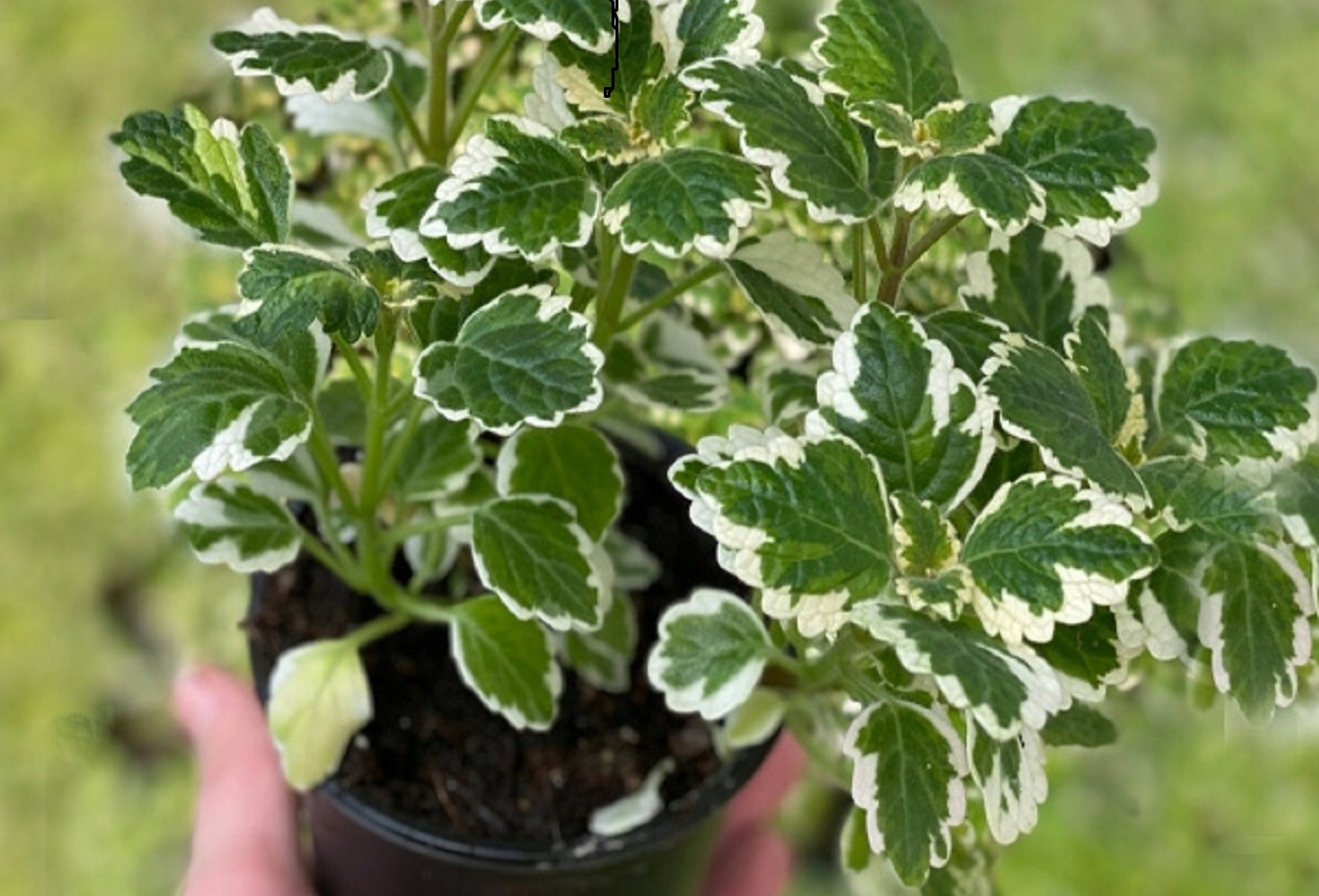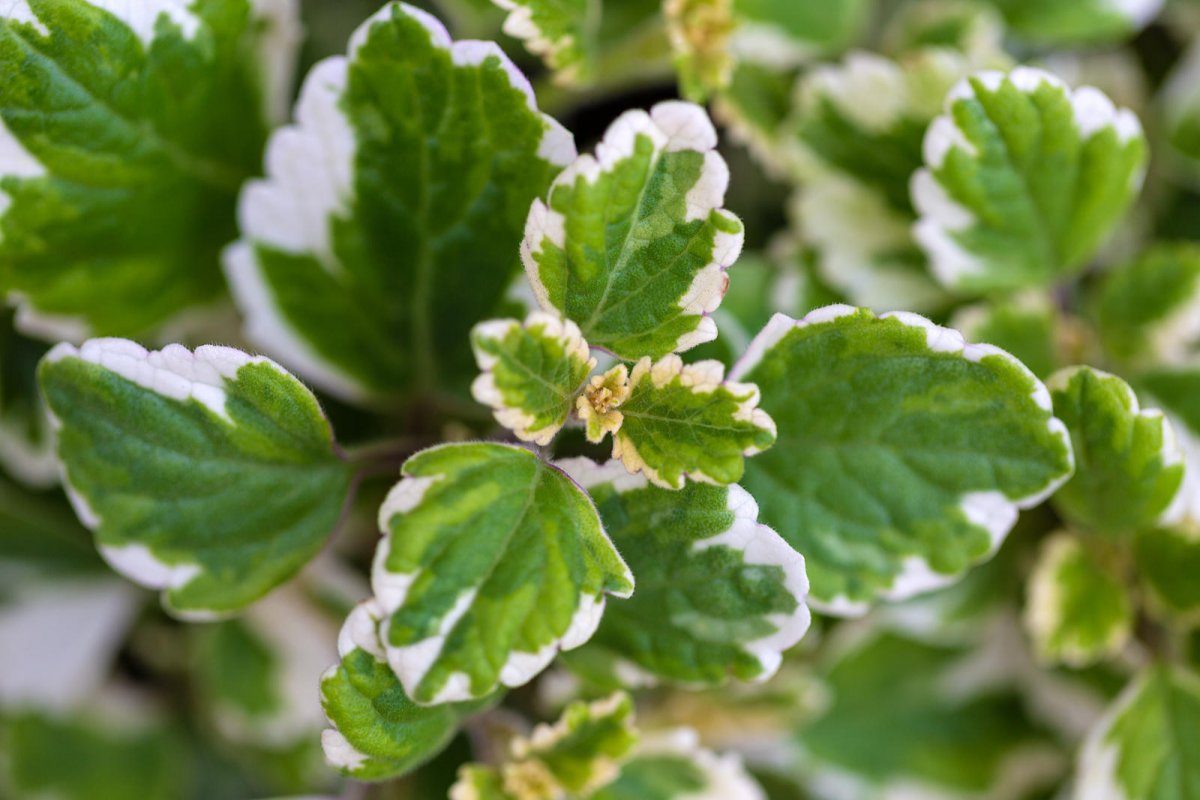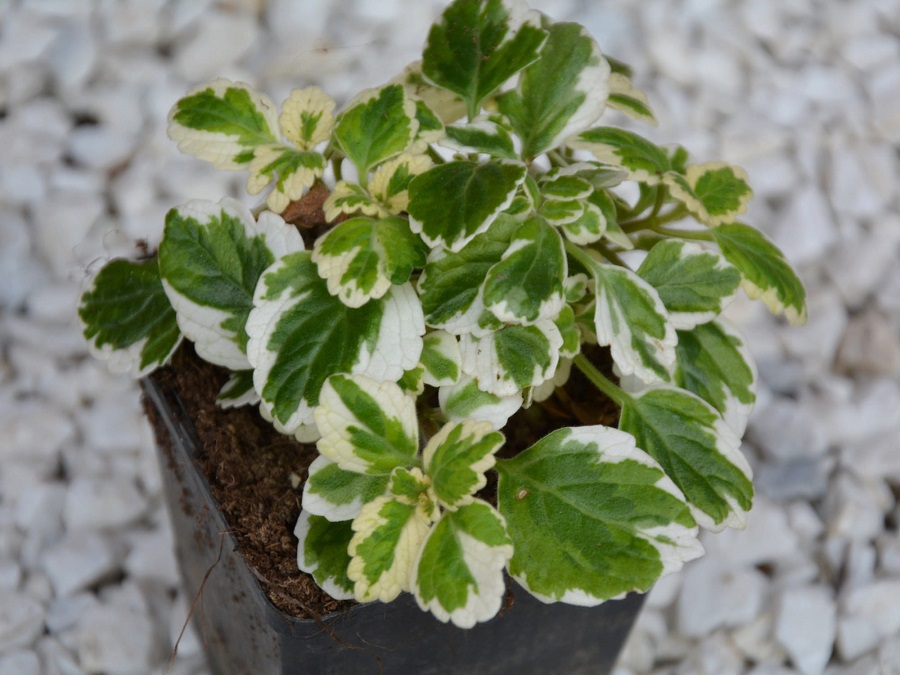Cuidado de la Incienso Planta - Aprenda a Cuidar la Incienso Planta Variegada
La Incienso Planta de bordes blancos, también conocida como Plectranthus coleoides, es una planta perenne de la familia de las lamiáceas. La especie es originaria del este de la India. Es bastante común en Asia y África. Gracias a su interesante aspecto y propiedades, se está haciendo popular también en otros continentes. ¿Se pregunta si la hiedra sueca es una buena opción para usted? Aprenda a cuidar la hiedra sueca y a crear las mejores condiciones para la planta.

¿Qué aspecto tiene la Incienso Planta?
La Incienso Planta se considera una planta anual. Pero, de hecho, con una pequeña ayuda y los cuidados adecuados, puede sobrevivir incluso unos cuantos años.
Al principio, la planta desarrolla ramas rectas y largas, que luego empiezan a enroscarse hacia los lados. Hay que tener en cuenta que las ramitas pueden llegar a medir incluso algunos metros. La hiedra sueca florece maravillosamente: desarrolla pequeñas y discretas flores de color púrpura claro.
La popular hiedra sueca variegada puede reconocerse fácilmente por los bordes blancos de las hojas.

Incienso Planta - floración
La Incienso Planta tiene unas características flores pequeñas y delicadas, típicas del grupo de las Lamiaceae. Aparecen en forma de colas de 15-20 centímetros de largo, que crecen desde la parte superior de las ramas de la planta.
Dependiendo de la variedad, las flores son de color púrpura claro o blanco.
¿Cuáles son los tipos de Incienso Planta?
Hay varios tipos de plantas de hiedra sueca. La variedad variegada es la más popular: es la que tiene hojas características con bordes blancos. Este tipo también se conoce como Marginatus.
Other popular types include:
- Cilatus - sus hojas son irregulares y tienen manchas blancas en la superficie.
- Elf - tiene hojas más gruesas, que contienen dos tonos de verde.

Incienso Planta - una planta con beneficios especiales
La hiedra sueca es valorada no sólo por su aspecto, sino también por sus propiedades. El olor de la planta es beneficioso para quienes sufren de problemas de sinusitis. Pero no es la única ventaja. Se suele plantar en patios, cenadores y balcones por una razón. Su intenso olor repele a los mosquitos, gracias a lo cual omiten el lugar donde crece la Incienso Planta. Por eso, si escoge esta planta, podrá sentarse al atardecer en el exterior sin tener que aplastar constantemente a los molestos mosquitos.
¿Dónde poner una hiedra sueca: en el interior o en el exterior?
La hiedra sueca queda perfecta en un jardín. Puede colocarse en el exterior durante los meses cálidos. La planta también se puede cultivar en interiores, como planta de interior. En este caso, requiere más atención y una poda ocasional. Antes de decidirse a llevarla al interior, asegúrese de familiarizarse con el olor de la Incienso Planta. Es característico y no todo el mundo lo tolera.
¿Cuál es el mejor lugar para una hiedra sueca?
El Plectranthus coleoides no tiene requisitos especiales de suelo. Puedes plantar los plantones en varios tipos de suelo. Sólo asegúrate de que sea permeable y fértil. Puedes ocuparte de estos dos factores preparando una mezcla de compost y arena. Es una forma fácil de proporcionar buenas condiciones a una planta de Incienso Planta, independientemente de si crece en el exterior o en una maceta en el interior.

¿Cuándo plantar Incienso Planta?
¿Se pregunta cuándo es el mejor momento para plantar la Incienso Planta? La segunda quincena de mayo es el mejor momento para plantar los plantones en el jardín después de las últimas heladas. Además, es el momento en el que puedes poner macetas con plantas de interior de hiedra sueca en los balcones o junto a las escaleras, delante de la casa o de un cenador.
¿Cómo se cuida la Incienso Planta?
La hiedra sueca es fácil de cuidar. Recuerda que no se puede regar en exceso ni plantar en suelo húmedo. Si la planta recibe demasiada agua, sus ramas podrían empezar a marchitarse, o sus raíces podrían simplemente pudrirse.
¿Hay que abonar una Incienso Planta?
La hiedra sueca debe plantarse en un suelo fértil. Se recomienda utilizar mezclas compradas en la tienda y aplicarlas en el lugar elegido. De lo contrario, hay que alimentar la planta con fertilizantes líquidos. Sin embargo, este proceso puede resultar pesado para los jardineros inexpertos.

¿Cómo trasplantar una Incienso Planta?
Una Incienso Planta en maceta debe replantarse al menos una vez al año. Es esencial debido a que las raíces se extienden. En algunos casos, puede ser necesario hacerlo incluso más a menudo: tres veces al año. El cambio de maceta es esencial si quiere que su hiedra sueca florezca y crezca adecuadamente.
Incienso Planta - problemas y enfermedades típicas
La hiedra sueca es resistente a la mayoría de las enfermedades, por lo que rara vez se producen problemas. No obstante, a veces puede notar la presencia de pulgones en las hojas. En este caso, céntrate en deshacerte de las plagas. También puedes comprar un producto especial para nutrir y restaurar la planta dañada.
¿Dónde comprar una Incienso Planta?
Las hiedras suecas suelen ofrecerse en floristerías y centros de jardinería. A veces, se pueden encontrar plántulas en los supermercados. Buscar esta especie en mercados online también es una buena idea. A veces, la gente quiere deshacerse de buenas plantas por un precio bajo.
¿Cuánto cuesta una hiedra sueca?
El precio de una planta de hiedra sueca depende de varios factores, como su tamaño y el tipo de hojas. Las plantas más baratas no cuestan más que unos pocos dólares. Por las más caras, puede que tenga que pagar incluso 30 Euro. Pero hay que admitir que es un precio bajo para las valiosas propiedades y la ausencia de mosquitos.

📍 ¿Qué es una Incienso Planta?
La hiedra sueca es una planta perenne. Tiene unas hojas características, verdes con bordes blancos. Se puede reconocer la planta por la forma en que se extiende a los lados.
📍 ¿Cuál es el mejor momento para plantar una Incienso Planta?
Puedes plantar una Incienso Planta en el exterior, pero las temperaturas tienen que ser cálidas. Si vives en zonas más frías, espera hasta la segunda quincena de mayo. Puede plantar una hiedra sueca directamente en el suelo de su jardín, pero también crece bien en macetas. Estas plantas en maceta son perfectas para decorar patios y cenadores.
📍 ¿Dónde se puede comprar una Incienso Planta?
Puede comprar semillas de Incienso Planta en una tienda de jardinería. Estos lugares también ofrecen plántulas de esta planta. Las tiendas en línea y los sitios web de subastas suelen ofrecer estas plantas en distintas fases de crecimiento.
📍 ¿Cómo invernar una Incienso Planta?
Mantener una Incienso Planta en el balcón no es la mejor solución. Si quieres que la planta sobreviva al invierno, tienes que invernar correctamente. Esto significa que debes llevarla al interior antes de las primeras heladas. La temperatura óptima para invernar las hiedras suecas es de 10-15°C (50-59°F).
Artículos destacados




